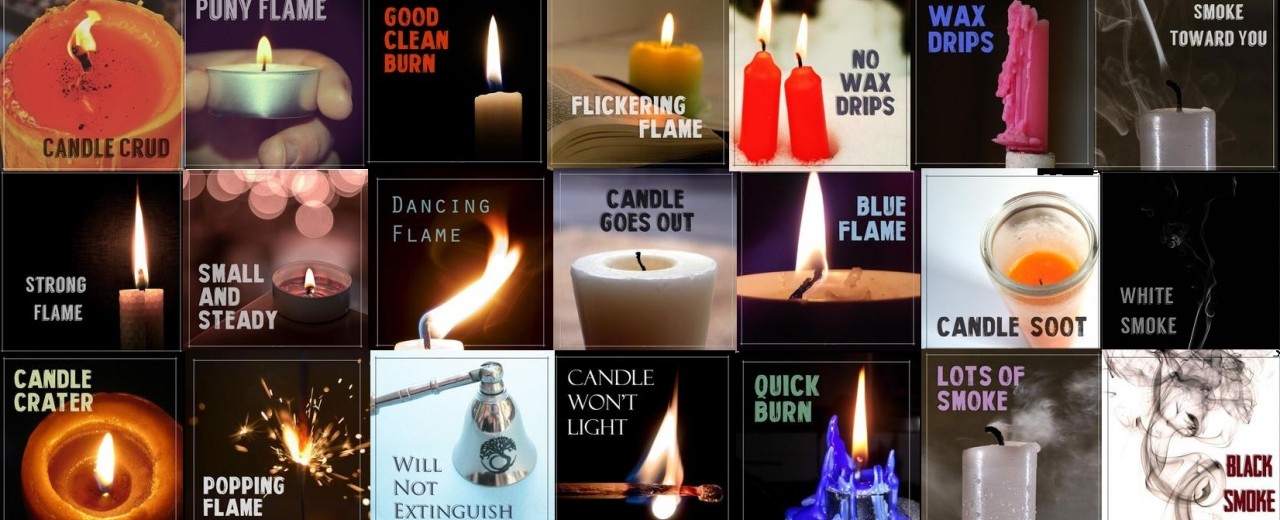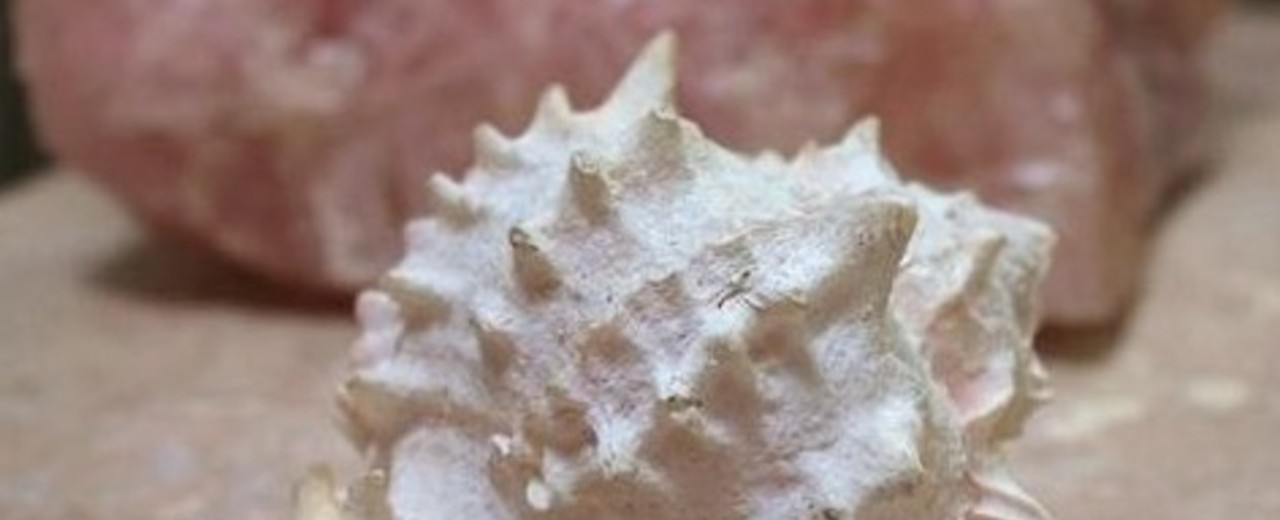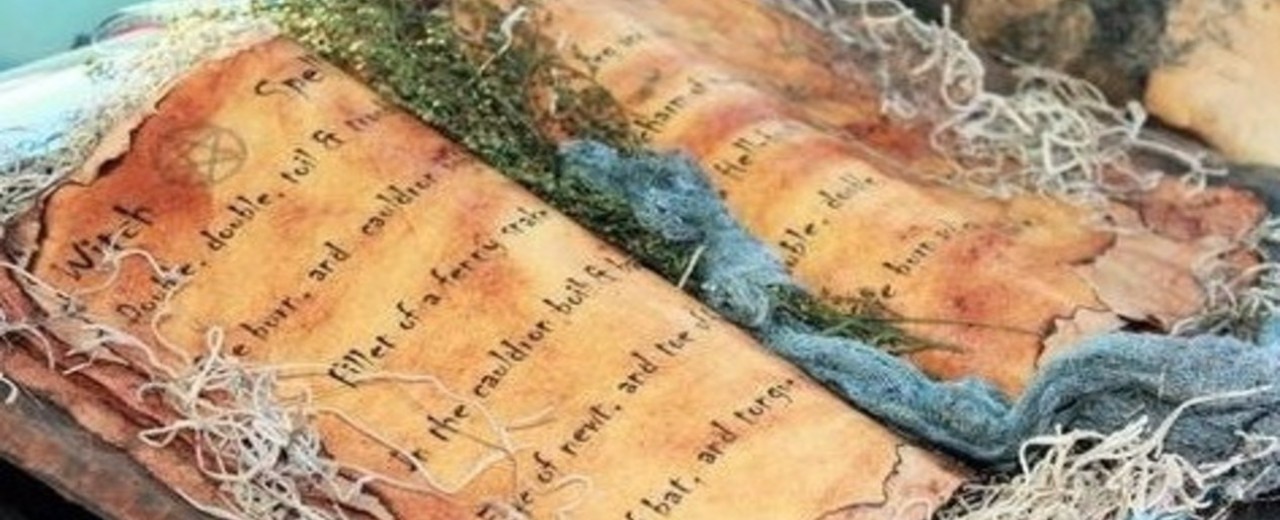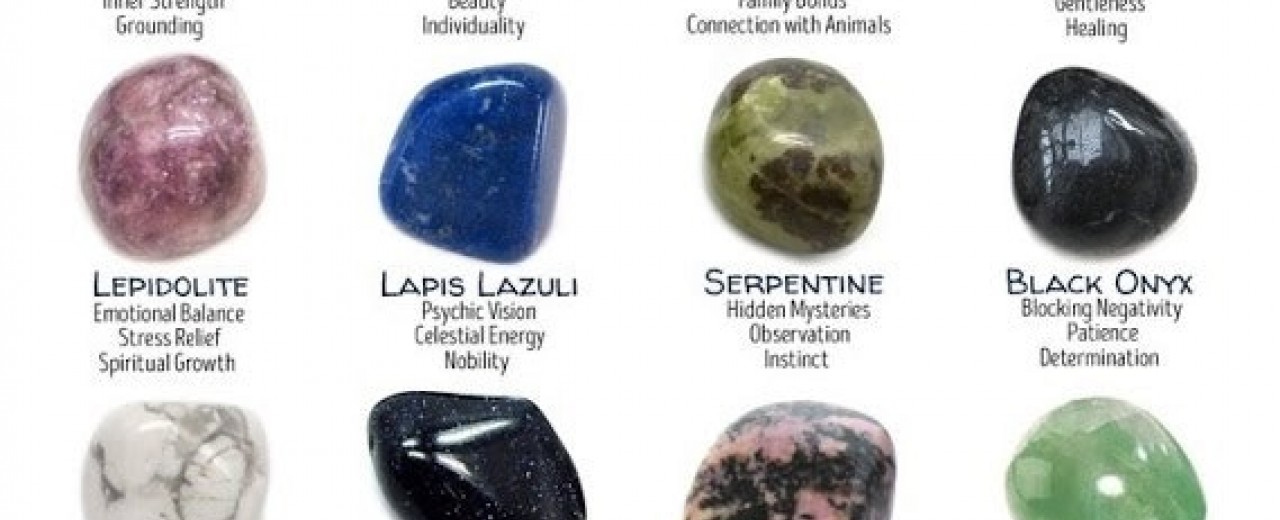Like any other subculture, Pagans have our own special vocabulary. Many of them just aren’t found in Wicca 101 books or infographics. Fortunately, I write down unfamiliar words and Google them later so you don’t have to.
This glossary covers some of the more obscure words and phrases in the Pagan lexicon. The ones that might leave you scratching your head if you’d never heard them before (or never before in a Pagan context).
This is certainly not an exhaustive list of Pagan and magickal terminology—just a quick rundown of some of the weirdest Pagan words and phrases zipping around out there.
Adept – A person who—through study, practice, or natural gifts—is extremely proficient at a magickal system. A master. Adepts are rumored to actually exist, but anyone who claims to be one probably isn’t.
Aspect – A form, facet, or persona of a deity. As a verb, “to aspect” means to channel or invoke the deity into oneself.
Asperge – To purify a space by sprinkling water. Often performed before ritual. The bundle of herbs used for this purpose is called an asperger.
Athame – A ritual knife. In traditional Wicca, the athame has a double-edged blade and a black handle. Generally speaking, the athame is used only for magick—never to cut objects. Most witches say “A-thum-may” (with a short “a” as in “cat”). But you might also hear “AW-thum-may” or even “aw-THAYM.”
It’s obnoxious to correct someone’s pronunciation of “athame,” especially since the actual origins of the word are obscure. Don’t be bullied. Pick your favorite pronunciation and use it.
Balefire – A sacred fire, especially one in which offerings or magickal items are burned. Balefires are kindled during the festivals of Beltane and Samhain. For practical reasons, a balefire usually happens outdoors, but even a small cauldron fire can serve as a balefire.
Besom – A ritual broom. Witches don’t fly on their besoms, but they do use them for energetic (and physical) clean-up.
Blot – A term meaning “sacrifice” in Norse Paganism. Pronounced “bloat,” a blot is a communal gathering to honor the Gods. In olden times, a blot revolved around the slaughter of a large animal whose body would feed the holy feast. At a modern blot, you’re unlikely to see an animal sacrifice. You will see a lot of eating, libations, and readings of Norse legends and religious poems.
Book of Shadows – A Witch’s or coven’s magickal diary. The Book of Shadows includes rituals and teachings, records of spellwork, and anything else that is important to the Witch’s practice. The term comes from Gerald Gardner, and refers to a time and place when such a book would need to be carefully hidden.
Boline – A small knife that Wiccans use for cutting herbs and other ritual items. Gerald Gardner describes it as a “white handled knife.” The spelling varies. It can be pronounced “BO-leen,” “BO-lin,” or “BULL-en.”
Broom Closet – A person who is not public about his/her Pagan beliefs is said to be “in the broom closet,” e.g., “He’s still in the broom closet at work.” Formed by analogy with the LGBT slang “in the closet.”
Burning Times – A collective name given to the Bad Old Days of the Reformation, Inquisition, etc., when Witches were burned alive by fanatics.
Cafeteria Pagan – A pejorative name for an eclectic Pagan. A cafeteria Pagan is someone who picks their spiritual beliefs and practices from whatever “looks good,” without devoting serious study to any of the traditions they borrow from. The concept of cafeteria Paganism is related to concerns about cultural appropriation and dilettantism.
Cakes and Ale – A communal offering of food and beverage, most often performed at the close of a Wiccan circle. The ritual honors the gifts of the Earth and the presence of the Lord and Lady. The actual ingredients of the offering will vary according to the season and the preferences of the celebrants. Sometimes Wiccan refer to the ritual as “cakes and ale” even if the altar holds sangria and chocolate chip cookies.
Casting the Circle – A Wiccan practice of creating sacred space. The first step in many rituals, casting the circle carves out a separate space for magick to occur.
Cense – To cleanse or bless with incense. Ritual space and ritual participants are often prepared by censing. The vessel used for censing is called a censer.
Charge – To imbue with energy. People, things, and places can be charged. Ritually charging objects is an important component of many spells. “Clearing” or “grounding” the energy reverses the effects of charging.
Coven – A group of Witches who meet regularly. Contrary to popular belief, a coven need not contain thirteen members. The word initially referred to any gathering, but now connotes witchcraft and secrecy. It comes from the same Latin root as “convene.”
There are as many types of covens as there are families. Some are open and welcoming, some are tiny and secretive. Wiccans are the most likely to call their groups coven, but other Witches use the word, too. Lots of covens have fanciful names, like “Order of the Briarwood” or “Draggyns Myst Coven.”
Covenstead – A covenstead is a place where a coven regularly meets. It is the home of the coven on the physical plane. Since most Pagan groups don’t have temple space of their own, the covenstead could be a bit of parkland, someone’s living room, or the backyard of a liberal church.
Cowan – An old derogatory term for a non-Wiccan or non-Pagan. In the post-Potter era, it’s been almost universally replaced by “muggle.”
The Craft – Witchcraft, especially hereditary witchcraft. The Path of the Wise, the Old Ways, the Hidden Arts, etc. A perfectly good phrase that was all but ruined by a cheesy 1996 movie.
Craft Name – A name adopted for spiritual/magickal purposes. A Craft name may come to you in a moment of inspiration, or be conferred upon you by a teacher. Some Witches take their names from an honored deity, plant, or animal.
Croning – The process of becoming a Crone, or wise elder. Some Pagans have Croning celebrations for women who have attained the third phase of life. (The male equivalent is “Saging.”)
Dedicant – A person who has been studying with (but not yet initiated in) a magickal coven or lodge. Dedicants learn about the group’s beliefs and practices before committing to membership. In Wicca, the dedicatory period traditionally lasts a year and a day—after which the candidate may decide whether to seek full initiation.
Some covens have formal dedication ceremonies and attendance requirements for dedicants. Others just encourage newbies to hang around for a bit and see what it’s all about. The titles Neophyte and Probationer are also used to refer to the stage(s) prior to initiation.
Deosil – Clockwise. Deosil movement is often used when casting the circle or raising energy. (“Sunwise” means the same thing.)
Drawing Down – “Drawing Down the Moon” or “Drawing Down the Sun” is a possessory invocation of the Goddess or God, respectively. Drawing Down the Moon means invoking the Goddess into the body of the High Priestess of coven. (In traditional Wicca, the High Priest performs the invocation.) The rite was referenced by Margot Adler in a famous book by the same name.
Now that Pagan groups are tending to become less gender-rigid (yay), it’s not uncommon to hear “drawing down” refer to any possessory deity work. A person in a state of possessory trance is said to be “drawn down.”
Eclectic – A person who draws their spiritual practices and beliefs from diverse sources, without adherence to one tradition. Adjective or noun. (Unscientific estimate: 95% of Pagans self-identify as eclectic.)
Elder – An aged person, often a leader within the Pagan community. A Crone or Sage. A Second- or Third-Degree coven member is sometimes called an Elder regardless of age.
Esbat – A coven meeting outside of one of the eight Sabbats. Typically, this is Full Moon observance—though there are covens that hold their Esbats during the New Moon. There are normally 13 Esbats in a calendar year. The word was brought into popular usage by Margaret Murray’s 1921 book, The Witch-Cult in Western Europe.
Esbats are a time to perform spells and psychic training, while Sabbats are generally more celebratory. Besides being an opportunity to have a Lunar ritual, Esbats are a time for covens to meet socially and take care of coven business. Solitary Witches observe the Esbats as a time for personal magick and communion with the Moon.
Familiar – An animal who acts as a helper to the Witch during magickal work. Some Witches use the term more generally to refer to a companion animal or pet. The word “familiar” may also refer to familiar spirits—disembodied beings that the Witch contacts as a part of their magickal work.
Fluffy Bunny – A phrase coined in early online Pagan communities to distinguish New Age-y, love-and-light Pagans from self-styled “serious” practitioners. Fluffy bunnies avoid in-depth study and flee from anything dark or challenging. You will rarely meet someone who self-identifies as a fluffy bunny—the term is nearly always meant as an insult.
Great Rite – Symbolic or actual sexual act performed as part of a ritual. It represents the Hieros Gamos, the sacred marriage of the Goddess and God.
Handfasting – A Pagan ceremony of marriage, or alternately, betrothal. Handfasting is a rite that may be connected to or separate from civil (legal) marriage. For a handfasting to be legal in most places, it needs to be performed by an ordained clergy member. (Handparting is the Pagan ritual equivalent of divorce.)
High Magick – A general term for ceremonial and ritual magic of a lofty sort. High Magick is concerned with spiritual progress, communion with Gods and higher beings, and uncovering the secrets of the Universe.
Hive – To “hive” (or “hive off”) is to form a new coven from one or more of a coven’s current members. The word refers to the way in which young queen bees must leave the colony to form their own colonies. Wiccans may hive off after attaining their Third Degree within a coven.
Hiving off allows a former student to transition into a leadership role with minimal disruption to the existing group’s structure. The new coven is called a sister coven of the old one.
Kindred – In Norse Heathenism, a community that meets for worship and mutual support. A Heathen kindred is a kind of extended family. Kindreds may be formal or informal. Its members may be related by blood or by choice. Some non-Heathen Witches also use the word “kindred” (or “family”) to describe brothers and sisters of the Craft.
Left-hand path – Refers to various magickal paths including destructive magick, self-serving magick, or non-obedience to God. (If someone describes themselves as a left-hander or on a left-hand path, you might want to ask them what they mean.)
Lineage – An unbroken chain of students and teachers within a magickal tradition. It is common to claim a lineage stretching back to some well-known figure.
Low Magick – More commonly referred to as witchcraft. “Low Magick” encompasses such practices as spell-casting, ritual healing, hex-breaking, divination, and good luck charms. (See High Magick.)
Magick/Magik/Majik – Alternate spellings used to distinguish occult pursuits from stage magic. “Magick” is often attributed to Aleister Crowley and is the most common variation. (Though it will always trip up spell-check and some people find it hopelessly precious.)
Maiden – Wiccan term for the young Goddess, the first aspect of the Triple Goddess. Also used to refer to the junior female member in a coven who serves as an assistant to the High Priestess. (The High Priest’s equivalent helper is called the Summoner.)
Once-Born – A young soul. Many Pagans judge themselves to be “old souls,” so the term is usually derogatory.
Otherkin – A subculture of people who believe themselves to be partially non-human. Otherkin include Fae, Elves, Werewolves, Vampires, Dragons, and so on. There is some overlap between Otherkin and Pagan/magickal communities.
PST (Pagan Standard Time) – An imaginary time zone invented to explain endemic Pagan lateness.
Quarter Call – An evocation of one of the four elements, or quarters. Calling the quarters is a component in most circle-casting rituals. One person may call all four quarters, or the task may be divided between four or more ritualists. A quarter call is the first bit of public magick that many people ever perform.
Reconstructionist – A Pagan who attempts to re-create ancient spiritual practices from historical information.
Rede – An archaic word for advice or counsel. The Wiccan Rede is, “An it harm none, do as ye will.” Wiccans just call it “the Rede.” The “Complete Wiccan Rede” or “Long Rede” is a 26-line poem attributed to Lady Gwen Thompson..
Sabbat – One of the major Wiccan/Pagan seasonal holy days. There are eight Sabbats based on the Celtic agricultural calendar. They are further divided into four Quarters (Yule, Ostara, Litha, Mabon) and four Cross-quarters (Samhain, Imbolc, Beltane, Lammas).
Second-Degree Fever – An unfortunate disease often contracted by initiates who have just attained their Second Degree and feel all giddy with power. Symptoms include bragging, posturing, acting like a know-it-all.
Skyclad – Wiccan term for ritual nudity. Some Pagan groups prefer to perform rituals skyclad.
Smudge – To ritual cleanse someone, something, or someplace with smoke. Various fragrant herbs can be used for smudging. The best-known smudging herb is White Sage—but some Pagans prefer not to use it, out of concerns about co-opting a Native American spiritual practice. (The word itself is from Old English smogen, meaning smoke).
Solitary – A Witch who practices alone, without a coven or group. (Used as an adjective or noun.)
Sumbel – In Norse Paganism, a communal ritual of celebration. At a sumbel, the horn is passed, toasts are made, and oaths are made before the Gods. A sumbel is a joyful affair that is nonetheless performed within sacred space.
Tradition – The Pagan equivalent of a religious denomination. A collection of beliefs, methods, and rituals passed down through a group. Most living Pagan belief systems have various traditions, called “trads” for short.
Uncle Al – Affectionate nickname for Aleister Crowley, British occultist whose work influenced contemporary witchcraft and Paganism.
UPG (Unverified Personal Gnosis) – A legacy of early internet forums, “UPG” is an acronym that describes information that is experienced by one person and presented as fact within a spiritual community. Some examples are dreams, visions, and channeled communications. Discussions about the Gods, afterlife, and the Otherworlds are full of UPG and UPG-haters. (Ed. note: “UPG” is not a very nice thing to say to someone who has just shared a significant spiritual experience with you.)
Wiccaning – The Wiccan rite of blessing an infant or child. There is no standard Wiccaning ritual—most involve welcoming the child into the world and asking the Lord and Lady to watch over him or her. Probably formed by analogy with “christening.”
Widdershins – Counter-clockwise movement. Normally used in banishing rituals or to un-cast the circle.
Working – A magickal undertaking, especially a long, intense, or complex one. Spellcasting, channeling, and evocation…they are all types of workings. (Even though they can also be fun!)
I’ll be adding more weird Pagan words as I meet and talk to more weird Pagans. Happy magick-ing!
I hope that this was informative and helpful. If so, tell me in the comments below.











